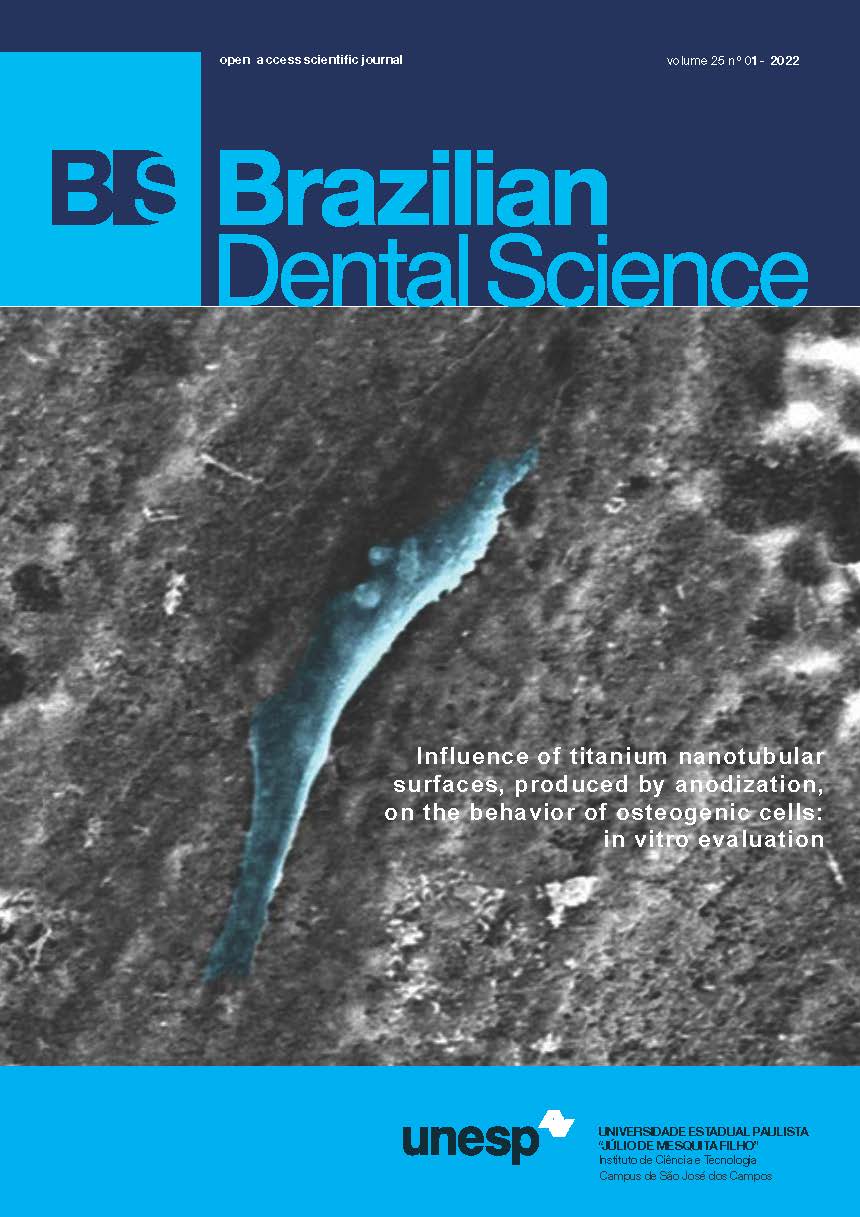Force decay and discoloration of thermoplastic and thermoset orthodontic elastomeric chains
DOI:
https://doi.org/10.4322/bds.2022.e2612Resumo
Objective: Elastomeric chains are commonly used to apply force for orthodontic dental movements. However,
force decay and discoloration are two important weak points of these materials. The present study intended to
compare the force decay and color stability of different types of elastomeric chains. Material and Methods: This
in vitro study evaluated 6 groups of elastomeric chains, including thermoplastic (TP) and thermoset (TS) chains
made by the companies American Orthodontics (AO), Ormco (OR), and G&H Orthodontics (GH). The elastomeric
chain forces were measured at the baseline, following 1 hour, 1 day, 1, 2, 3, 4, 5, and 6 weeks of stretching.
The elongation required for the chains to exert a force of 250 g was calculated. E of each group was calculated
by a spectrophotometer following immersion in black tea solution for 6 days. Data were analyzed using the
SPSS 22 software and the statistical methods of repeated measures analysis of variance and two-way analysis of
variance (P<0.05). Results: The force decay of the TS chains were significantly lower than the TP chains in the
6-week study duration (P<0.05), and the lowest and highest force decay was observed in the products by AO
and GH, respectively. The highest force degradation occurred during the first week in all groups. The elongation
rate needed for the TS chains was significantly higher than the TP chains (P<0.05), and the highest elongation
rate was observed in the products by OR. TS chains showed significantly higher color stability than TP chains,
and products by OR and GH had better color stability than the products by AO. Conclusion: The present study
showed that TS chains were superior to TP chains in force decay and color stability in all the brands studied.
KEYWORDS
Color; Elastomeric; Force decay; Thermoplastic; Thermoset.
Downloads
Downloads
Publicado
Versões
- 2022-03-29 (2)
- 2022-02-04 (1)
Como Citar
Edição
Seção
Licença
TRANSFERÊNCIA DE DIREITOS AUTORAIS E DECLARAÇÃO DE RESPONSABILIDADE
Toda a propriedade de direitos autorais do artigo "____________________________________________________________________" é transferido do autor(es) para a CIÊNCIA ODONTOLÓGICA BRASILEIRA, no caso do trabalho ser publicado. O artigo não foi publicado em outro lugar e não foi submetido simultaneamente para publicação em outra revista.
Vimos por meio deste, atestar que trabalho é original e não apresenta dados manipulados, fraude ou plágio. Fizemos contribuição científica significativa para o estudo e estamos cientes dos dados apresentados e de acordo com a versão final do artigo. Assumimos total responsabilidade pelos aspectos éticos do estudo.
Este texto deve ser impresso e assinado por todos os autores. A versão digitalizada deverá ser apresentada como arquivo suplementar durante o processo de submissão.




























